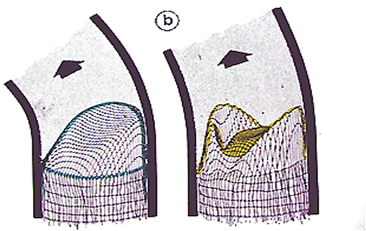0.2.7.
Coiled Reactors
Since all FIA systems use coiled reactors, let us review the effect of distorting the tubular conduit. In a curved tube (a), secondary flow develops, creating a radial flow pattern, the intensity of which increases (b) with increasing flow velocity and decreasing tube diameter (Golay 1979). In this geometry, the central streamline moves toward the outer wall (A). This effect that can be observed at a tail section (B) of a zone of a dye moving through a spiral tubing (C), showing the outer wall already cleared from the dye, due to a higher flow velocity than the velocity at the inner wall of the tube.
Equivelocity profiles (for Dean number =100), of axial direction (D left) show faster flow rates at the outer wall, while equivelocity profiles of radial direction (D right) show an increase of radial mass transfer close to the tube wall. The tighter the coil, the smaller the radius and the faster the radial mass transfer rate. (Soeberg 1988)
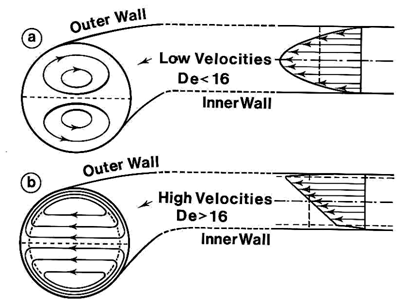
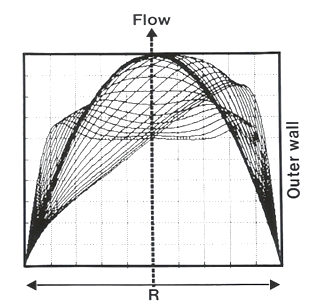
A
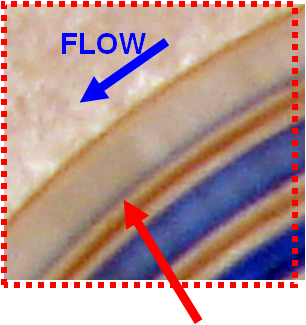
B
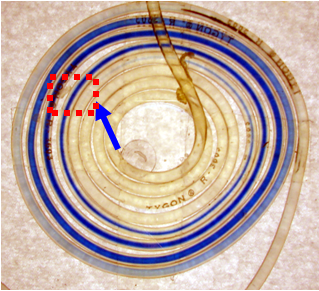
C
D
